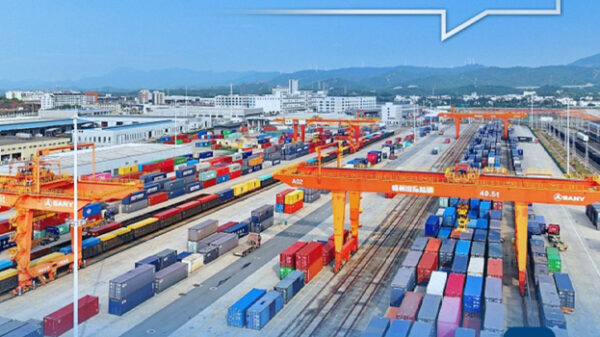SAN JOSE MINE, Oct 11 – The operation to bring 33 Chilean miners trapped underground for more than two months back to the surface neared its final stage Monday as engineers worked to reinforce a shaft through which the workers will be hoisted.
Mining Minister Laurence Golborne told reporters the men could begin the ascent, one by one, on Wednesday.
After the shaft in secured, workers will install a metal cage and a complex pulley system needed to lower the cage to the miners and lift them out.
Each miner will be pulled up 622 meters (2,040 feet) for one and a half to two hours in a container barely wider than a man\’s shoulders.
The first group of miners to exit will be several of the strongest men, followed by a group considered the weakest due to chronic health problems like high blood pressure or lung ailments, and ending with more of the stronger ones, officials said.
If the timetable holds, all the miners could expect to end their ordeal of nearly two and half months by Friday.
They have been trapped deep beneath the desert floor in a chamber the size of a living room after a partial collapse that blocked the mine exit on August 5, surviving longer than anyone has before under similar circumstances.
For weeks the men were feared dead. But on August 22 they attached a note to a drill bit that had broken through to the chamber where they had taken shelter, saying they were all alive, well and awaiting rescue.
Health Minister Jaime Manalich told a press conference near the San Jose gold and copper mine in northern Chile on Sunday that he had already discussed with the miners the details of the operation.
"I questioned them and mentioned we were working on an order in which they would be brought out," Manalich said. "I said the order would be determined by technical factors.
"And what was their reaction? \’Mr. Minister, that\’s fine but I want to go last please.\’ And then another guy said, \’No, my friend, I said that I was going to be the last one up.\’ \’No, no, really — I want to go last, please,\’ another guy started saying."
By being able to put aside their needs and wanting their colleagues to have a chance at freedom and fresh air first, "they have had a really commendable spirit, of solidarity and commitment to their friends," Manalich stressed.
As to their health condition, the minister said they were in "very good shape. The people at the bottom of the mine were healthy people the day of the accident."
In addition "they are mature people and very self-sufficient people, who have been able to face a test the likes of which probably no one has in human history," Manalich said.
The miners will begin a special liquid diet about 12 hours ahead of the rescue operation expected to start Wednesday.The aim is to reduce any nausea and vomiting during their removal from the depths of the mine, while still keeping up their caloric intake.
Engineers, meanwhile, were reinforcing the shaft that will be used to finally free the men.
Gerardo Jofre, head of the board of Chile\’s state copper giant Codelco, maintained that the rescue effort has put Chile at the forefront of such operations.
"The technology we have used in the digging and building the access to the miners are really on the cutting edge because these technologies never had been used at such great depths or for these objectives," Jofre said. "This is a landmark in mining worldwide in terms of rescue operations."
The deep shaft to the emergency shelter where the men have survived was completed on Saturday.
Meanwhile, hundreds of journalists and camera crews from around the world have converged on the mine, hoping to capture the first images of the miners at the surface.














































